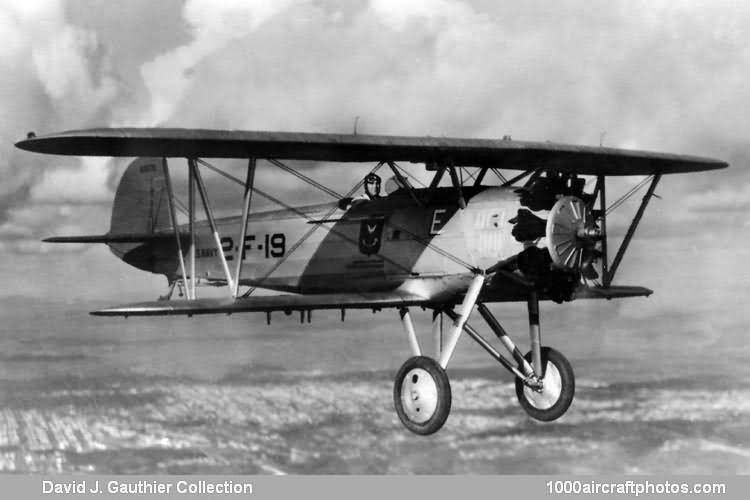03/31/2012. Remarks by Johan Visschedijk: "After the Model 74 XF3B-1 was returned to the factory, it re-emerged as almost an entirely different aeroplane. The fuselage and engine installation were essentially the same except that the nose was lengthened, but the landing gear, wing, and tail were completely changed. The upper wing, while still a one-piece unit with built-up spars and jigsawed plywood ribs, featured constant chord and a sweepback angle of 6º 28'. The lower wing was still two-piece, but with constant chord and no sweepback.
The tail surfaces of the new prototype retained the general outline of the initial XF3B-1, but in common with the ailerons, used an entirely new method of semi-monocoque all-metal construction in which stiffness was provided by the corrugated covering. This type of construction proved to be so satisfactory that it was retained for all sub-sequent production Boeing biplane fighters and the last experimental biplane fighter, the XF6B-1 of 1933. The USN received 77 F3B-1s, powered by a 425 hp Pratt & Whitney R-1340 Wasp engine.
Coded 2-F-19, this aircraft was assigned to VB-2 (Fighter Squadron Two) "Flying Chiefs" aboard the USS Langley (CV-1), and was used by Commander E.E. Wilson, on staff of ComAirBatFor (Commander, Aircraft, Battle Force), also aboard the USS Langley."
